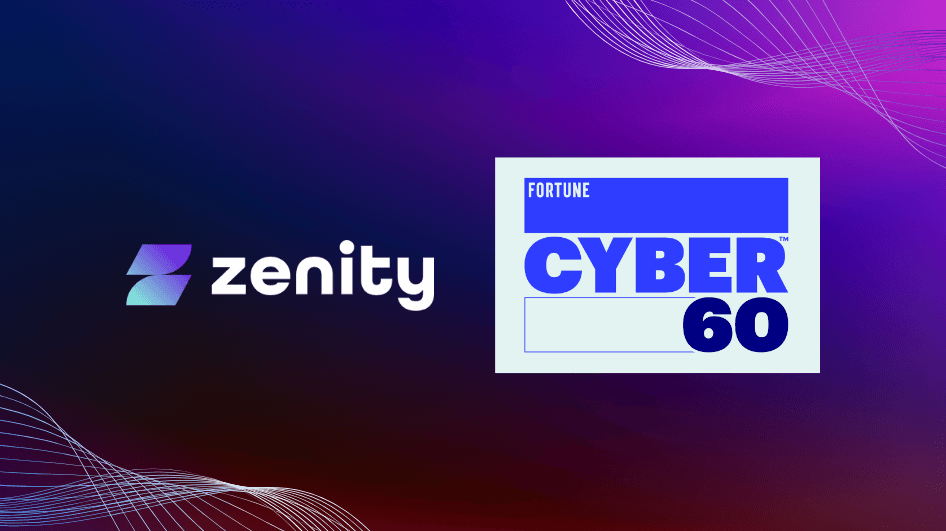Why 60% of security experts are concerned about low-code/no-code apps

In Part 1 of this post, we discussed four hot trends in low-code/no-code development: the rise of citizen development, increasing use of low-code platforms by IT professionals, established SaaS platforms transforming themselves into low-code platforms, and top use cases, including business transactions, Covid management and remote work.
Let’s move on to the next four low-code trends that we’ve observed, and our predictions for how they’ll play out in 2022.
Trend #5 – The enterprise app explosion (and a growing need for management)
With digital transformation as a high priority among forward-thinking organizations, solutions for streamlining processes, organizational coordination and workforce cooperation are in demand. The go-to solution? Enterprise apps for workflow management, process automation, data transfer, you name it. Even back in 2018, enterprises used an average of 129 apps, a 68% increase over four years. Today, with low-code/no-code makes it easier to create apps, we are seeing an average of 10K apps in the enterprises that use Zenity!
The downside is that with so many apps used in different departments and different projects, enterprises face shadow IT issues, data silos and countless redundant automated processes… In short, growing chaos that requires immediate resolution.
Enter iPaaS: integration platform as a service.
iPaaS connects different applications, data, on-premises, or on the cloud,into one platform. iPaaS integration capabilities prevent data silos and enable more visibility across company channels. All the organization’s apps are brought together under one umbrella, creating order for enterprise companies.
iPaaS in 2022: will grow in popularity.
Their ability to organize and automate end-to-end business processes will prove invaluable to the enterprise that seeks to optimize both technological and human resources.
Trend #6 – Increase in low-code/no-code customizable websites and email marketing platforms
No longer are changes to company websites the exclusive domain of a single webmaster and their team.
WordPress, the hugely popular CMS powering 37% of sites on the internet, has multiple visual drag-and-drop builder tools available, giving non-technical users the freedom to easily add or change design, content, or functionality without being dependent on IT.
WIX’s acclaimed Super Bowl ads highlighted how simple it was for business users to create and customize a website (even in the midst of some seriously “disruptive times”).

Similarly, email marketing platforms like Mailchimp or ConvertKit enable their users to build email automations and drip campaigns without venturing into coding or long development cycles.
Scott Brinker, VP Platform Ecosystem at Hubspot, said back in 2018: “Now every marketer is an app developer – even if they don’t know it.” Hubspot itself is a prime example of enabling non-technical marketing and sales users to easily streamline operations and create process automations.
Low-code website builders and email marketing platforms in 2022:
Will become ubiquitous. Website content management systems and email marketing providers that DON’T yet have low-code/no-code functionality will need to add it in order to stay competitive.
Trend #7 – Increasing intelligence in Robotic Process Automation (RPA)
Auto-pilot is amazing… while the skies are clear. Once you hit turbulence, you better be ready to grab the controls.
Standard robotic process automation (RPA) is fantastic… as long as it is designed and planned correctly. The bigger the organization, the greater the value robotic process automation brings to the business. RPAs streamline dull and repetitive business operations, reduce human error, and free employees to spend time on more high-value work. RPA can manipulate data, trigger responses, and communicate with other digital systems. These particular tasks must be meticulously designed if you genuinely want to impact staffing costs and boost efficiency. However, these predetermined business processes are far from flexible.
Fortunately, human intelligence has been able to design more and more sophisticated process automation. The kind that leverages Artificial intelligence (AI), machine learning (ML), and digital process automation (DPA) to proactively handle more complex and less cut-and-dry situations that until now would have required humans. These “Intelligent Process Automation (IPA)” tools enable the management and automation of complex digital processes, drastically improving operational efficiency.
While more time-consuming to set up, IPA solutions have resulted in huge savings for companies. Bizagi’s IPA solution helped Adidas reduce its factory onboarding time by 50% and decreased the operational cost of its supply chain by 60% (eliminating 1 million emails per year through integration).
Amazon Sagemaker Canvas is the newest IPA entry on the market, offering a visual, no-code capability that allows business analysts to build ML models to create accurate predictions without a single line of code or machine learning expertise! Sagemaker Canvas also accesses different data sources (in the cloud or on-premises), combines datasets and continues to generate new data predictions.
IPA in 2022:
Will get smarter and smarter, pushing the envelope of what we thought we needed humans to handle. Human intelligence will still be needed, obviously, but we’ll be able to channel it toward higher level, more creatively demanding assessments and decisions.
Trend #8 – Low-code security and governance catching up with traditional development security and governance
Information security has been a formal discipline since the 1970s. InfoSec processes, procedures, and standards have, over time, become an integrated part of the software development lifecycle (SDLC).
But low-code/no-code development has turned the SDLC on its head. The process is much shorter, moving from “Envision” to “Create, Verify, Deploy” in a very short time with very few people (sometimes just a single individual!) involved. Planning specifications, monitoring performance and managing remediation when needed just aren’t built into the low-code development process, and traditional InfoSec and AppSec solutions don’t transfer to the low-code/no-code development pipeline.
The gap has been felt by CIOs and CISOs at many enterprises as the number of applications burgeoned and flooded their business environment (we know; we worked with many of them!). They were technically responsible for the security of these low-code applications but didn’t have the tools to govern them at scale.
That was the motivation behind the creation of Zenity: to bridge the gap. To give those responsible for low-code application security the tools they needed to do their job effectively, while still enabling the business to move forward. To bring the principles of traditional information, application and software development security to bear on the unique challenges of low-code. We’re gratified to see that Zenity is already achieving these goals.
Low-code security and governance in 2022:
Will become much less of a threat and an overwhelming impossibility to CIOs, CISOs, and those responsible for their organizations’ application security. Platforms like Zenity will enable InfoSec and AppSec professionals to be business enablers, empowering the enterprise to take advantage of the growth afforded by low-code development, without incurring risk.
Low-code/no-code: no longer the new frontier
While low-code application development was around long before 2020, COVID-19 accelerated its widespread adoption… and now there’s no looking back. LCNC has settled in for the long term, fueling innovation in SaaS, iPaaS, IPA and website design.
As we enter 2022, the low-code industry will continue to expand to meet the needs of growing enterprises, supporting innovation and flexibility. Low-code security, governance and management tools will grow in parallel, mitigating the inevitable growing pains and keeping businesses on the fast track.
All ArticlesRelated blog posts

Considerations for Microsoft Copilot Studio vs. Foundry in Financial Services
Financial services organizations are increasingly turning to AI agents to drive productivity, automate workflows,...

Claude Moves to the Darkside: What a Rogue Coding Agent Could Do Inside Your Org
On November 13, 2025, Anthropic disclosed the first known case of an AI agent orchestrating a broad-scale cyberattack...

Fortune Names Zenity to the Cyber 60: Owning the Era of AI Security
Defining AI Security: Zenity Named in Fortune’s Cyber 60 If you follow cybersecurity innovation, you’ve probably...
Secure Your Agents
We’d love to chat with you about how your team can secure and govern AI Agents everywhere.
Get a Demo